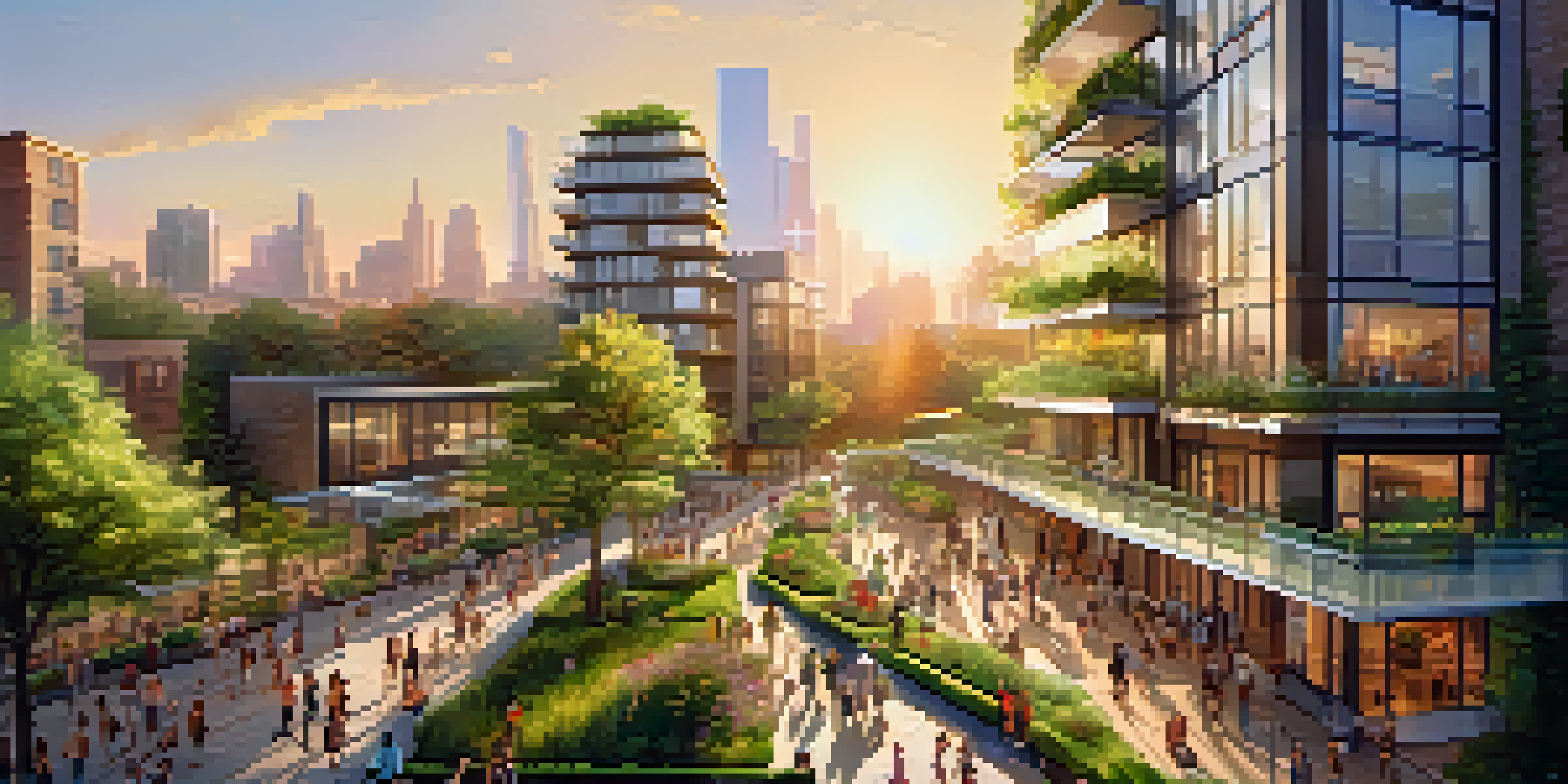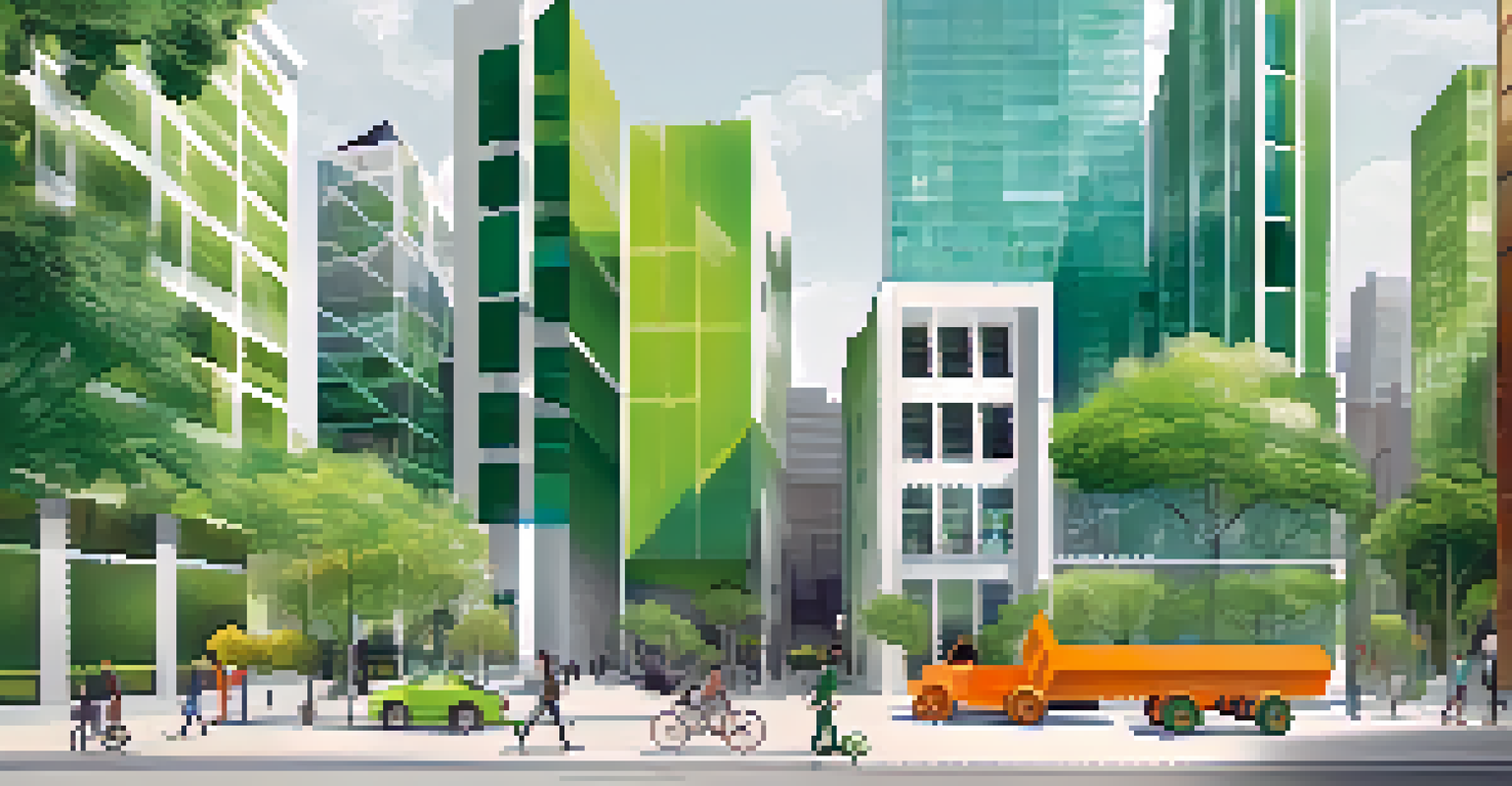The Role of Interest Rates in Sustainable Real Estate Development

What Are Interest Rates and How Do They Work?
Interest rates represent the cost of borrowing money, typically expressed as a percentage. When you take out a loan, you pay back the principal plus interest, which can fluctuate based on various economic factors. Essentially, it’s the price of money over time, and it plays a crucial role in the real estate market.
Interest rates are like the tide that lifts all boats; when they rise, the costs of borrowing can drown ambitious projects.
For real estate developers, interest rates influence financing decisions significantly. Lower rates mean cheaper loans, which can encourage more projects and drive sustainable development. Conversely, higher rates can deter investment, making it essential for developers to stay informed about the current economic climate.
Understanding how interest rates function can help stakeholders make better financial decisions. By comprehending these dynamics, developers can strategize their investments, ensuring they align with sustainable practices while also being financially feasible.
The Impact of Interest Rates on Real Estate Development
Interest rates have a direct impact on the overall cost of real estate development. When rates are low, borrowing becomes more affordable, allowing developers to invest in innovative, sustainable projects. This affordability can lead to increased construction activity, which can benefit the economy and promote eco-friendly building practices.

On the flip side, high interest rates can restrict access to capital, resulting in fewer projects. Developers may shy away from ambitious sustainable initiatives due to the elevated costs associated with borrowing. This creates a balancing act—developers must weigh the benefits of sustainability against the financial risks posed by rising interest rates.
In essence, the relationship between interest rates and real estate development is a dance of opportunities and challenges. As rates fluctuate, developers must adapt their strategies to maintain their commitment to sustainable practices while ensuring financial viability.
How Sustainable Development Benefits from Low Interest Rates
Lower interest rates can significantly boost sustainable real estate development by making it cheaper to finance projects. Developers are more likely to invest in green technologies and sustainable materials when they can secure loans at lower costs. This can ultimately lead to a more environmentally-friendly real estate landscape.
Sustainable development requires a holistic approach, and understanding economic conditions like interest rates is crucial for making informed decisions.
Moreover, reduced borrowing costs can encourage the adoption of energy-efficient designs and renewable energy sources. For instance, a developer might choose to incorporate solar panels or green roofs if they aren’t constrained by high financing costs. This not only helps the environment but can also result in long-term savings on energy expenses.
Ultimately, low interest rates create a favorable environment for innovative sustainable projects. Developers can take risks on cutting-edge technologies and designs that might have seemed impractical during periods of high borrowing costs.
Challenges of High Interest Rates for Sustainable Projects
High interest rates can pose significant challenges for sustainable real estate development. When borrowing costs rise, developers may be forced to scale back or abandon ambitious projects. This can hinder progress toward sustainability goals, as fewer resources are allocated to green initiatives.
Additionally, developers might prioritize short-term profits over long-term sustainability when faced with high financing costs. They may opt for traditional building methods that require less investment upfront, potentially sacrificing eco-friendly practices. This shift can stall the momentum gained in sustainable development.
In summary, while high interest rates can create barriers, they also serve as a reminder of the importance of financial planning. Developers must be strategic and consider innovative financing options or partnerships to maintain their commitment to sustainability despite economic challenges.
The Role of Government Policies in Interest Rates
Government policies play a pivotal role in influencing interest rates, which can subsequently affect real estate development. Central banks may adjust rates in response to economic conditions to stimulate growth or control inflation. These decisions can create ripples in the real estate market, impacting sustainable development initiatives.
For instance, lower interest rates can be a government strategy to encourage investment in infrastructure and housing. This can lead to a boom in sustainable projects, as developers take advantage of favorable financing conditions. Conversely, tightening monetary policy can slow down development, particularly in the sustainable sector.
Ultimately, developers should stay informed about changes in government policies regarding interest rates. Understanding these shifts can help them anticipate market trends and adjust their strategies for sustainable development accordingly.
Financing Options for Sustainable Real Estate Development
Exploring various financing options is crucial for developers focusing on sustainable real estate. Traditional bank loans are common, but there are also specialized financing solutions designed specifically for green projects. These options often come with lower interest rates or incentives to promote sustainable initiatives.
For example, green bonds have emerged as a popular way to fund environmentally-friendly projects. These bonds typically offer favorable terms for developers who commit to sustainable practices, making them an attractive financing option. Additionally, public-private partnerships can provide the necessary capital while sharing the financial risks.
By diversifying their financing strategies, developers can better navigate the challenges posed by fluctuating interest rates. This flexibility not only supports sustainable initiatives but also enhances their overall financial resilience in a changing market.
Looking Ahead: The Future of Interest Rates and Sustainable Development
As the real estate landscape evolves, so too will the relationship between interest rates and sustainable development. With increasing awareness of climate change and sustainability, there may be a greater push for policies that support low-interest financing for green projects. This could create a more favorable environment for sustainable real estate initiatives.
Additionally, technological advancements in construction and energy efficiency continue to emerge, potentially lowering costs. As these innovations gain traction, the impact of interest rates may become less significant in hindering sustainable development, allowing for more ambitious projects to flourish.

In conclusion, the future may hold promising developments for the intersection of interest rates and sustainable real estate. By staying informed and adaptable, developers can seize opportunities that arise, ensuring their projects contribute positively to both the economy and the environment.